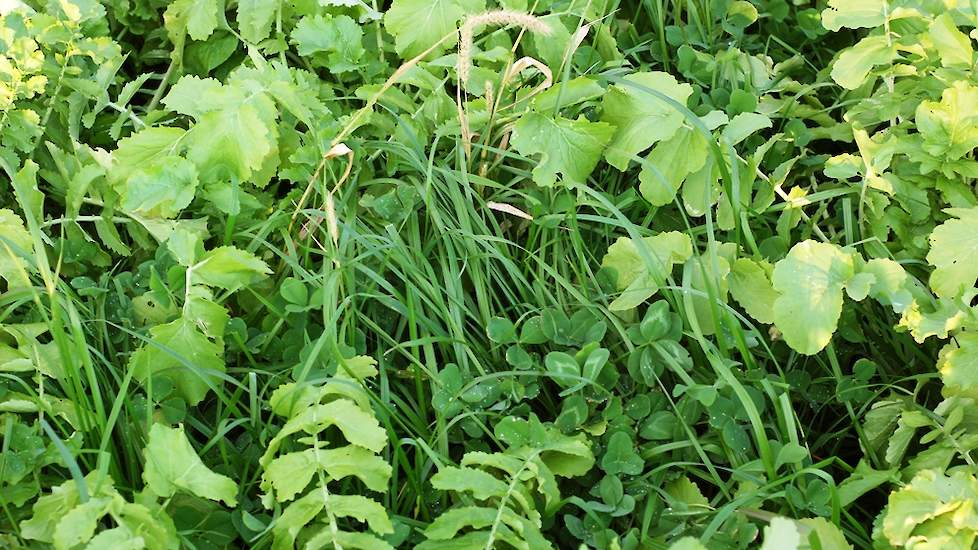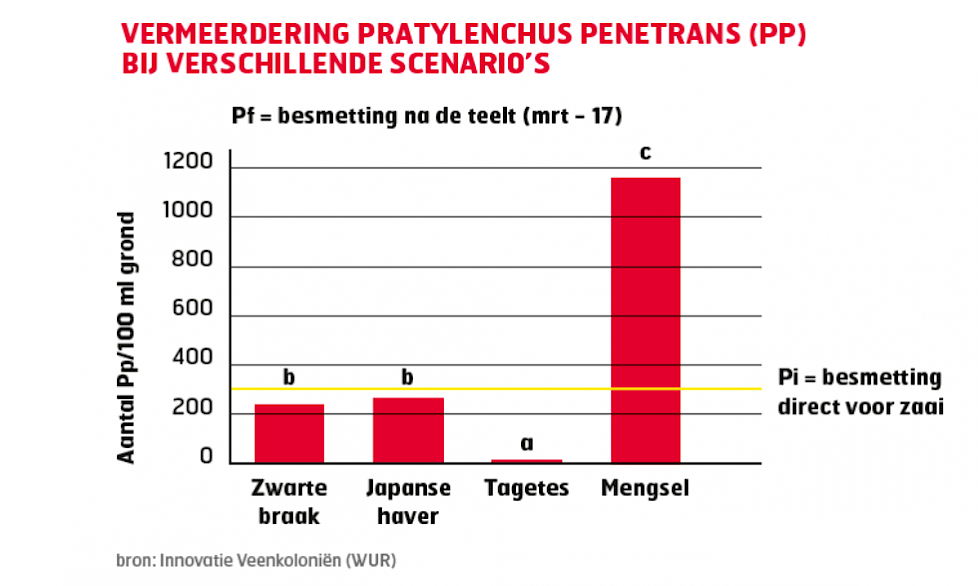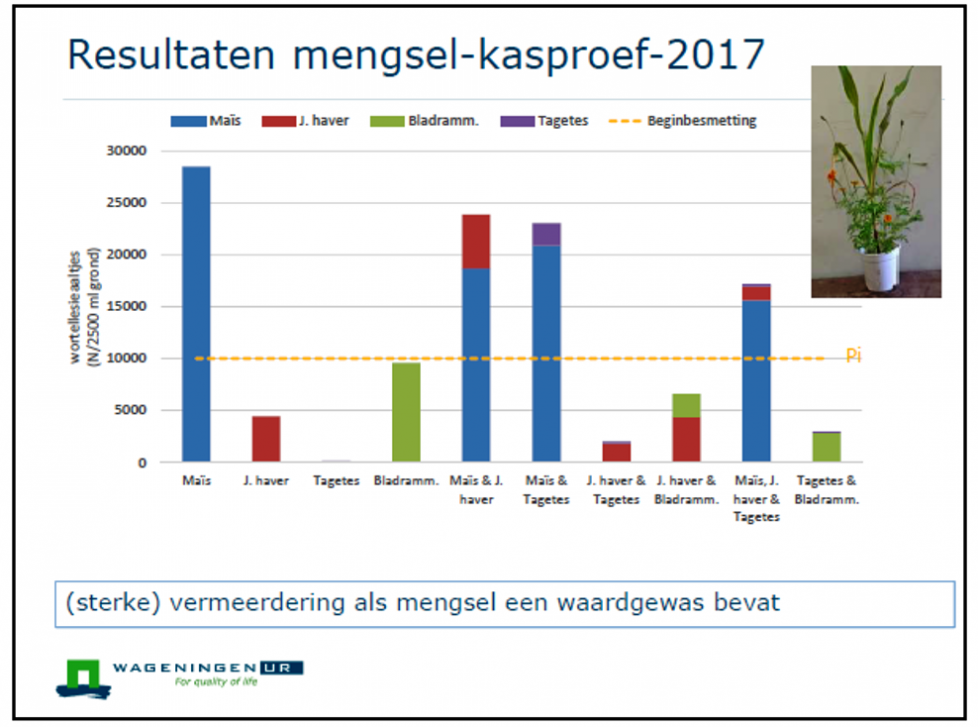Under the impulse of the Ecological Focus Area, the use of green manure mixtures is now commonplace. Mixtures have advantages in terms of soil cover and biomass, but if there are (potential) nematode problems on a plot, they are dangerous, according to studies by WUR.

Large nematode multiplication in complex mixture
A recent study in the Innovation Veenkoloniën project shows what the danger is. On a plot with the root lesion nematode Pratylenchus penetrans, black fallow, the unworthy Japanese oats , the Pp control agent tagetes and a mixture of 7 green manures were compared:

In the mixture, containing only one host plant for Pp, this harmful nematode was able to multiply considerably. This led to a loss of yield in the subsequent cultivation of starch potatoes.
Multiplication in mixture
Other studies also show that nematodes are able to find their host plants in mixtures. In a pot trial by WUR, the propagation of Pp was tested on maize (host plant), Japanese oats (non-host) and tagetes (control agent). As expected, the population after maize was considerably larger and after Japanese oats and marigolds much smaller. However, the three crops together resulted in a doubling of the population:

This shows that harmful nematodes in the soil actively search for their host plant and multiply considerably on it.
Advice: know the situation in your soil and adjust your green manure application accordingly! If you do opt for a green manure mixture, make sure you know what you are sowing and know the host plant status of all components. Choose your green manure here with a handy selection tool >>

